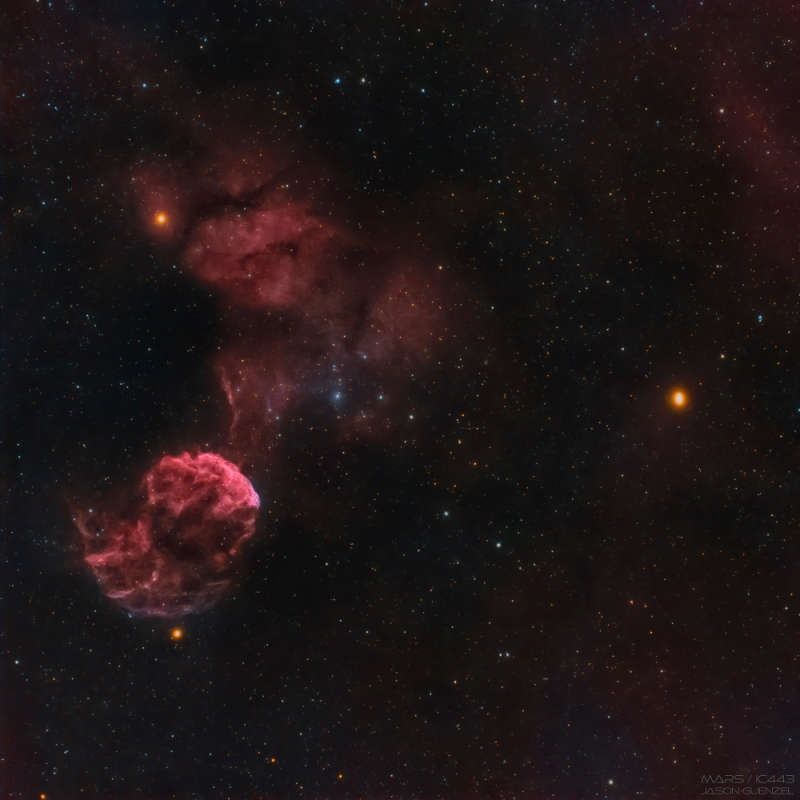Credit & Copyright: Jason Guenzel
Explanation:
Normally faint and elusive, the Jellyfish Nebula is caught in
this alluring
scene.
In the telescopic field of view two bright yellowish stars,
Mu and
Eta
Geminorum, stand just below and above the Jellyfish Nebula at the left.
Cool red giants, they lie at the foot of the
celestial
twin.
The Jellyfish Nebula itself floats below and left of center, a bright arcing
ridge of emission with dangling tentacles.
In fact, the cosmic jellyfish is part of bubble-shaped
supernova remnant IC 443, the expanding
debris cloud from a
massive star that
exploded.
Light from that explosion first reached planet Earth over 30,000 years ago.
Like its cousin in
astrophysical waters the
Crab Nebula supernova remnant,
the Jellyfish Nebula is
known
to harbor a neutron star, the remnant of the collapsed stellar core.
Composed on April 30, this telescopic snapshot also captures Mars.
Now
wandering
through early evening skies,
the Red Planet also shines with a yellowish glow on the
right hand side of the field of view.
Of course, the Jellyfish Nebula is about 5,000 light-years away, while
Mars
is currently
almost 18 light-minutes from Earth.
1998 1999 2000 2001 2002 2003 2004 2005 2006 2007 2008 2009 2010 2011 2012 2013 2014 2015 2016 2017 2018 2019 2020 2021 2022 2023 2024 |
Январь Февраль Март Апрель Май Июнь Июль Август Сентябрь Октябрь Ноябрь Декабрь |
NASA Web Site Statements, Warnings, and Disclaimers
NASA Official: Jay Norris. Specific rights apply.
A service of: LHEA at NASA / GSFC
& Michigan Tech. U.
|
Публикации с ключевыми словами:
supernova remnant - остаток Сверхновой - Марс - Mars
Публикации со словами: supernova remnant - остаток Сверхновой - Марс - Mars | |
См. также:
Все публикации на ту же тему >> | |
